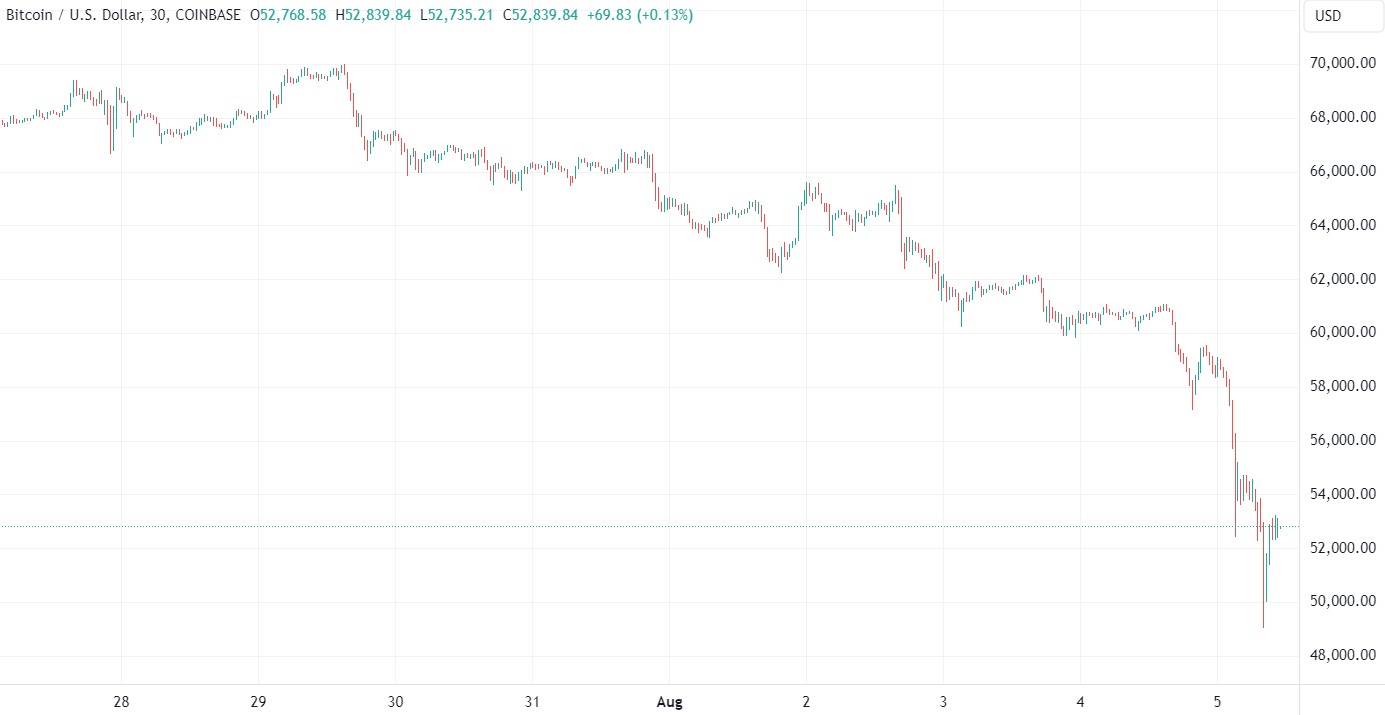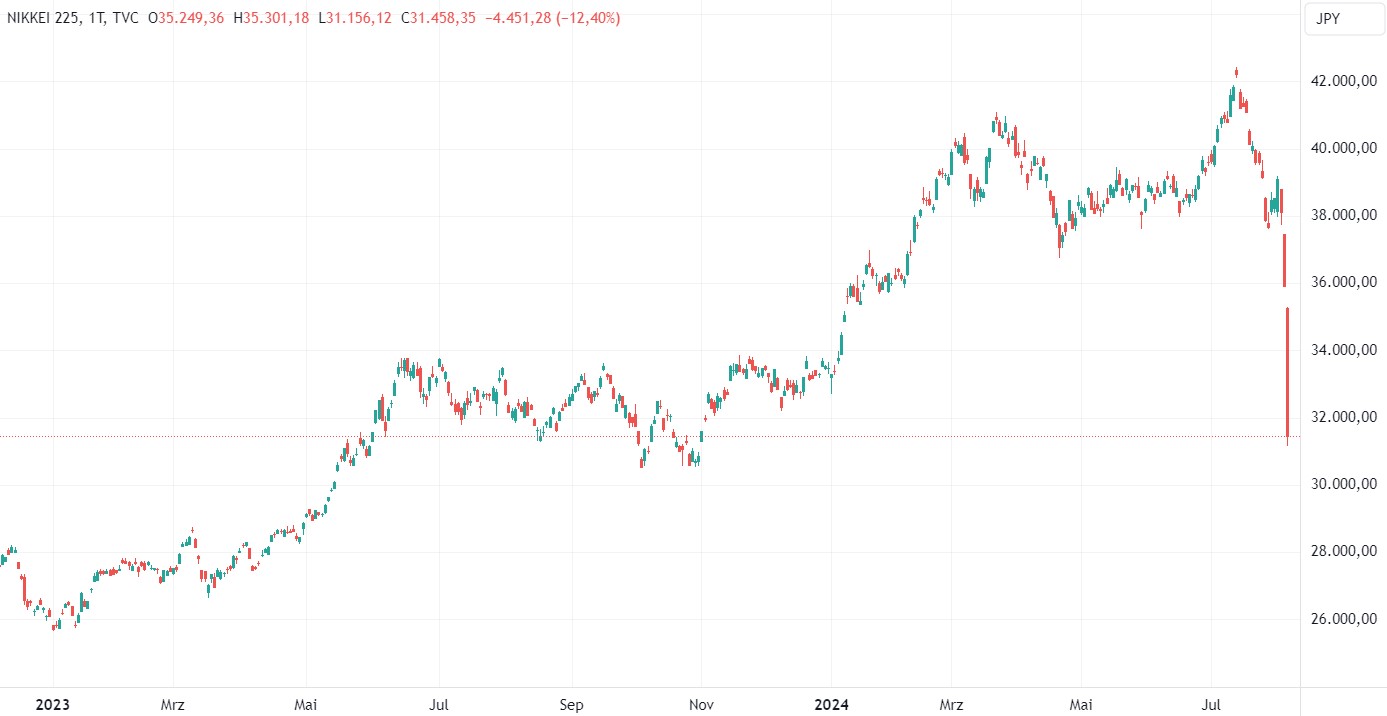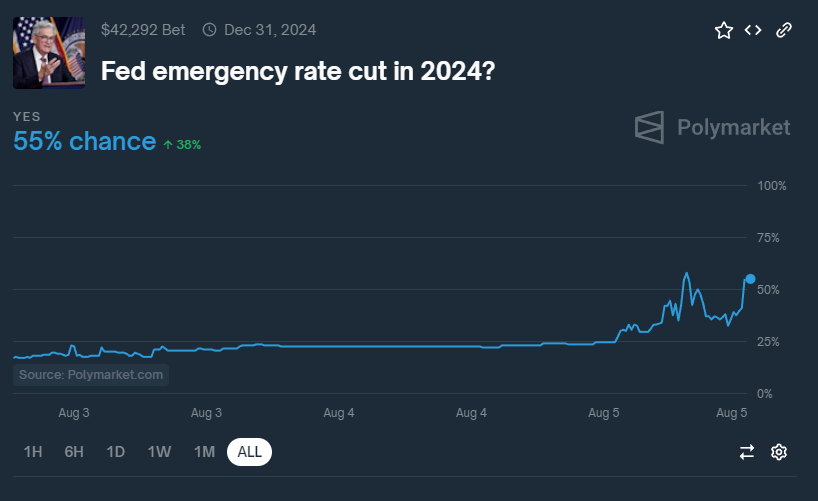Exactly one week ago, the Bitcoin price was still trading at USD 70,000. Since then, the asset has slumped by almost 30% at times and even briefly fell below the USD 50,000 mark.
Last week was even the worst for Bitcoin since the collapse of the FTX crypto exchange in November 2022, with a loss of around 15%. The sell-off continued at the start of the new trading week and Bitcoin has fallen to its lowest level since February of this year, causing panic on the market as a whole.
In the past 24 hours, around USD 900 million in long positions have been flushed out of the entire crypto market. These self-reinforcing liquidation cascades generally pull the Bitcoin price down all the more.
In general, Bitcoin still seems to be seen as a risk asset in the context of the panic on the overall markets. Accordingly, market participants are apparently selling more of their Bitcoin. The asset cannot offer a "safe haven" in the current situation.
Strong corrections are no reason for concern
Despite the sharp price slump in recent days, Bitcoin has still fared much better than the stock markets with a price increase of around 25% since the start of the year. The Nasdaq technology index, for example, has only gained around five percent since then.
Corrections of around 30% are also the norm rather than the exception, even in "Bitcoin bull markets". When Bitcoin rose from a few hundred to just under USD 20,000 between the beginning of 2016 and the end of 2017, there were several corrections of 30% or more.
As part of the overall market crash due to the coronavirus pandemic, Bitcoin was also dragged down significantly. The asset plummeted by over 60% within a few days, but recovered significantly when central banks opened the monetary floodgates in response.
Even in the summer of 2021, the asset fell from USD 65,000 to below USD 29,000 - a drop of over 55%. However, Bitcoin then continued its rally and rose to a new all-time high.
Panic on the overall market
As with the crash during the coronavirus pandemic, it is the entire financial market that is collapsing and dragging Bitcoin down disproportionately. Blocktrainer.de has already reported on the recession fears, geopolitical uncertainty and internal Bitcoin factors that are currently putting the asset under pressure.
In Japan, the first trading day of the week has already ended and the Japanese share index started the new week with a drop of no less than 12.4%. The Nikkei 225 ended the two worst consecutive trading days in history - down 18.2% - and is currently trading more than 25% below the all-time high set in mid-July.
Taiwan's stock index - the "Taiwan Weighted Index (TWII)" - recorded its highest daily percentage loss ever today at minus 8.4 percent.
US shares are also already under considerable pressure in pre-market trading. Apple and Nvidia, which dominate the US stock indices, are trading around ten percent lower on Monday morning. According to several 𝕏-users, the major US neobroker Robinhood has even suspended 24-hour trading as part of the collapse on the financial market.
In this panic, some market participants are already asking themselves whether and when the US Federal Reserve will step in and support the capital markets with liquidity. Even though the Federal Reserve's dual mandate is price stability and full employment, the monetary guardians are very concerned about financial market stability.
It remains to be seen how the situation will play out and how far the crash can go. Sooner or later, however, the central banks will get back to doing what they do best - supplying the capital markets with liquidity and thus causing asset prices to shoot up again in the medium and long term.
The bond markets are currently even pricing in an emergency interest rate cut by the US Federal Reserve in the coming days. The last such cut was in March 2020 in response to the coronavirus crash.
Meanwhile, the betting markets see the probability of an "emergency rate cut" by the Federal Reserve this year at 55 percent.
The yield on short-dated US government bonds is falling significantly as part of the recent correction and the market's basic assumption is now at least two interest rate hikes at the next central bank meeting on September 18.
It will be interesting to see how the financial markets and Bitcoin develop in the coming days and hours and what measures the central banks introduce - or whether the monetary authorities react at all.













